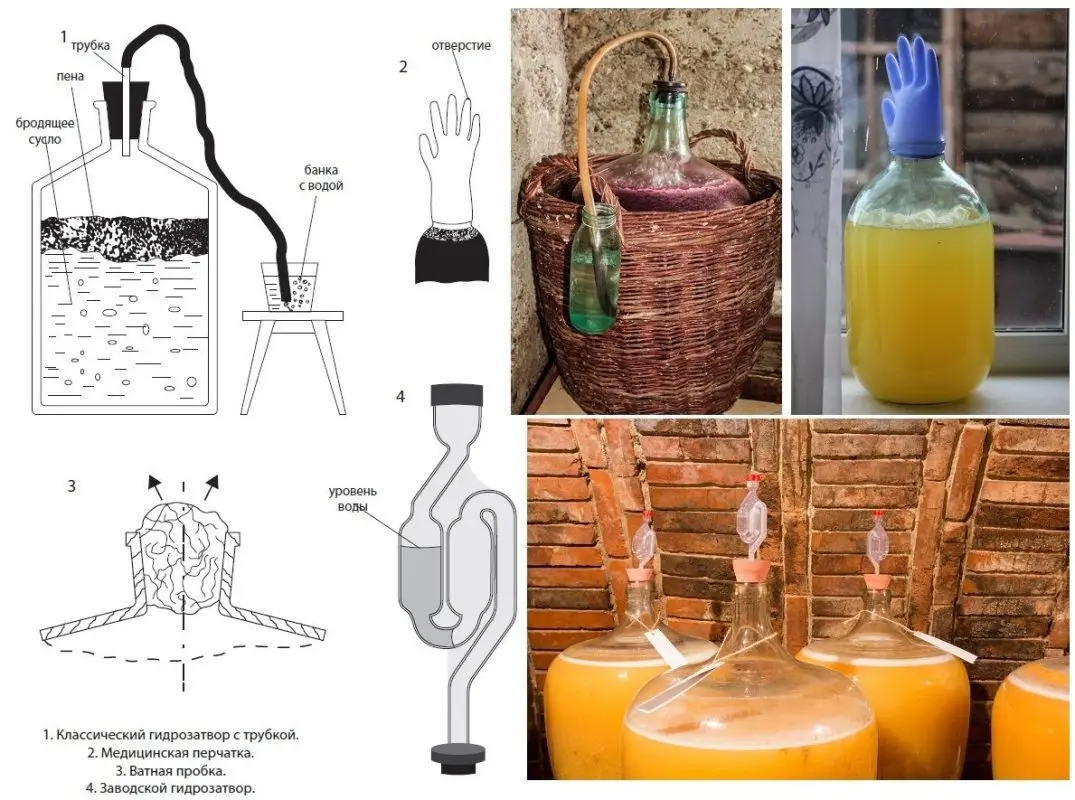Aromatic bouquet and taste of gooseberry wine resembles white grape wine. Among amateur winemakers, this drink is very popular. With a sufficient number of berries, I advise you to make homemade wine from them. We will consider a proven recipe and cooking technology further.
Varieties with large yellow or red berries are best suited for wine. We need only the most ripe fruits, which have a sufficient amount of sweet juice. It is very important to discard unripe, spoiled, rotten and moldy fruits that can spoil the drink. All containers must be sterilized with boiling water and dried.
Attention! Once harvested, gooseberries should not be stored for longer than a day, as they quickly lose their flavor and become unsuitable for winemaking.
Ingredients:
- gooseberries (agrus) – 1,5 kg;
- sugar – 1 kg;
- water – 1,5 liters.
gooseberry wine recipe
1. Mash unwashed (so as not to remove wild yeast) berries with your hands or with a wooden rolling pin. Pour the resulting mass into a glass container, preferably with a wide neck.
2. Make sugar syrup and pour over the berries. To prepare the syrup, it is enough to mix water and sugar in a saucepan, bring the mixture to a boil, boil for 5 minutes over low heat, stirring constantly and removing white foam. Cool syrup to room temperature before adding.
3. Mix the berry mass filled with sugar syrup well, tie the neck with gauze (to protect against insects) and leave for 3-4 days at a temperature of 16-26 ° C. Once a day, stir the must with your hand or a wooden stick, breaking up the top layer of pulp and skin.
4. If signs of fermentation appear (foam, hiss, sour smell), separate the juice from the pulp (pulp and peel): drain the liquid part through a thin tube, for example, from a dropper, squeeze the pulp well through cheesecloth, then mix both juices. In the filtered wort, a slight sediment and turbidity is allowed.
5. Pour the resulting juice into a clean fermentation tank. On the neck, install a water seal or a rubber glove with a hole in the finger. It is very important to prevent air from getting inside, otherwise, instead of homemade wine, gooseberries will turn into vinegar.

Fill the fermentation tank to a maximum of 2/3 of the volume. You need to leave room for carbon dioxide, which will appear during the fermentation process. If this is not done, high pressure can rupture the vessel.
A water seal is a plug with a hole in the center for the tube. One end of the tube is placed in a bottle, the other in a small jar of water. This simple device removes carbon dioxide. The glove works in the same way.
7. Transfer the must to a dark place with a temperature of 16-25°C. After 20-45 days, the airlock will stop bubbling (the glove will deflate), sediment will appear at the bottom, and the wine itself will noticeably brighten. This means that active fermentation is over. It’s time to drain the young wine from the sediment through a straw into another container.
If for some reason the wine ferments for more than 55 days, it must be removed from the sediment, poured through a tube into another container, a water seal is installed and left until fermentation is completed.
Taste the drink. Add sugar for sweetness if desired. You can also fix gooseberry wine with vodka (40% alcohol) in an amount of 2-15% by volume. Adding strong alcohol will extend the shelf life, but the flavor will become harsher.
8. Top filled, tightly closed containers (if sugar was added at the previous stage, keep under a water seal for the first 7-10 days) transfer to a dark room with a temperature of 10-16 ° C and leave for 2-3 months to ripen. It can be a basement, a cellar or a refrigerator.
When sediment appears, first every 15-20 days, then less often, filter the wine by pouring it into another container through a straw, without touching the sediment at the bottom.
After 3-5 months, the finished drink can be bottled for storage and hermetically sealed. Homemade gooseberry wine has a strength of 10-12 degrees (without the addition of vodka). I recommend storing the drink for no longer than one year at a temperature of 6-12°C. Further exposure is not advisable, because after 9-10 months the taste gradually deteriorates.











